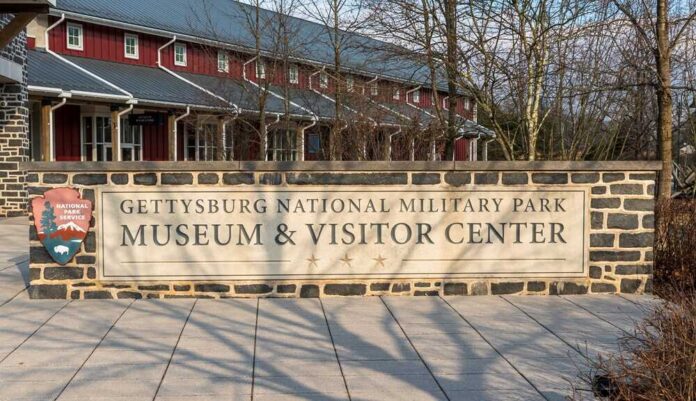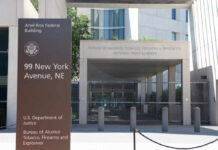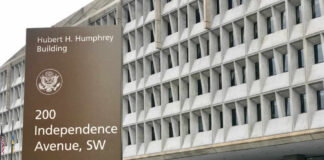
An archeologist discovered a live artillery round buried under a foot of dirt at Gettysburg National Military Park in Pennsylvania on Wednesday. According to the New York Post, the discovery led to the closure of roads, with Park employees clearing the area.
Earlier today, unexploded ordnance was found within the Little Round Top rehabilitation area. Adjacent roads have been temporarily closed to all visitors. US Marine EOD team – Fot Belvoir, VA will remove the shell. Roads will only be reopened when the area has been declared safe. pic.twitter.com/8WaQTs31ln
— Gettysburg NMP (@GettysburgNMP) February 8, 2023
The finding is believed to be an unexploded 3-inch shell casing from the 1863 Civil War and was discovered by Steven Brann.
Civil War artillery shell found at Gettysburg, ‘could have killed a dozen people’: report https://t.co/HUal4Javg9 pic.twitter.com/IMd8W1EwcC
— New York Post (@nypost) February 13, 2023
“This type of munition was historically used during the Civil War and most likely came from the Battle of Gettysburg in 1863,” Capt. Matthew Booker, the commander of the 55th Ordnance Company, said in a statement.
An unexploded artillery shell that may have come from the Civil War’s Battle of Gettysburg was found on the battlefield Wednesday, the national military park said. https://t.co/3hCE0T5DwT
— The Washington Post (@washingtonpost) February 9, 2023
Brann was at the historic battlefield known as Little Round Top and was sweeping the grounds when he made the discovery. Bran, who detected the shell with the aid of a metal detector, began digging through dirt to unearth the shell.
Jason Martz, a spokesperson for the park, revealed that Brann found the still-live 10-pound artillery shell after digging through about one foot of soil. Martz described Brann’s discovery as an “extremely rare find.”
“He (Brann) laid it gently on the ground, took a picture of it and ran for the hills,” Martz told CNN.
A man using a metal detector on the Gettysburg battlefield uncovered an unexploded artillery shell, covered in mud and looking as ominous as the day it was fired. https://t.co/MK4MR9D1Qg
— CNN (@CNN) February 10, 2023
Matz added that the shell could have easily killed dozens of people.
A team from the U.S. Army’s 55th Ordnance Company responded to the scene after traveling 92 miles from their Fort Belvoir, Virginia, headquarters. Staff Sgt. Alexander Campbell, who led the team, identified the shell as a 3-inch Burton case shot.
The National Park Service was forced to close nearby roads following the discovery. Those roads were, however, reopened after Campbel determined that the shell could be transported safely to a disposal area, where it was later blown up.















